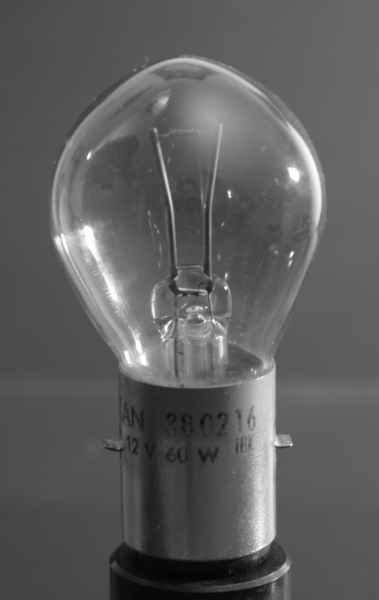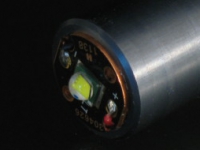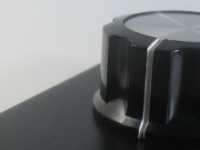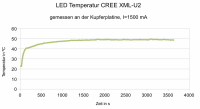Feb
21
2014
Bastian Asmus

Image width 200 µm, PPL. Medieval copper smelting slag.
The first thing to do is to establish the number of different phases present in the sample. In this case there are five different phases.
If you managed to follow so far, you have now reached part seven part of the slag microscopy course. After sample prep, with find documentation, cutting, mounting, grinding, lapping and polishing we are now going to have a look at the tool to be used for the next sessions: the polarising reflected light microscope, also referred to as an ore microscope. Continue reading
no comments | tags: How to, microscopy, slag | posted in Analysis, Archaeometallurgy, Microscopy, reflected light microscopy, Science, slag
Jan
29
2014
Bastian Asmus

Fig 1: The use of scientific image processing software allows to quantify the area proportion of each phase in optical micrographs. This is a two step process. The original micrograph is converted to a “threshold map” by modifying the colour channels of the source. The resulting black and white image is analysed for their respective area proportions. The count mask is then produced after quantification and may be used to verify which inclusions have been counted.
 I used this method during my PhD thesis to approximate the chemical composition based on a micrograph .
I used this method during my PhD thesis to approximate the chemical composition based on a micrograph .
A traditional method for the quantification of an alloying element in another is the estimation of the carbon content of a steel sample. The area of carbon inclusions is estimated by comparison with known standards, or better by measuring them. Area proportions are believed to represent volume proportions and need to be multiplied with the density ρ to calculate wt% proportions. Continue reading
no comments | tags: How to, photograhpy | posted in Analysis, Archaeometallurgy, General, Micrograph, Microscopy, reflected light microscopy, Science
Jun
27
2013
Bastian Asmus
[tab: Overview]
 Problem: Your microscope is fine working condition, the optics are flawless, but illumination is either dim, brightness is not adjustable or bulbs are hard to come by.
Problem: Your microscope is fine working condition, the optics are flawless, but illumination is either dim, brightness is not adjustable or bulbs are hard to come by.
Soultion: Retrofit your microscope with a high Power LED microscope illumination and these issues are in the past. Suddenly light consuming microscopy methods such as for example polarising or dark-field microscopy cease to be a problem. The utilised LED CREE XM-L is easily powerful enough for these tasks. The LED is powered with a maximum of 1600 mA. At core of the illumination solution is a LED driver and dimmer that I have specifically designed for this task. You can even make videos without any problems.
Custom made LED adapters are used for fitting the LED to your microscope. Upon request we can also do the conversion.
[tab: Universal LED Controller]
 The Universal LED Controller is able to drive and dim all prevalent LEDs. Brightness may be controlled continuously between 0 and 100 %. Especially the new and powerful LEDs require fine adjustment if they are used in the bright field. To this end the universal LED controller was fitted with switch reduce the maximum power to 160mA, and thus adjusting the brightness in the bright-field is possible with ease. Of course this range may also be set to a different level by the user.
The Universal LED Controller is able to drive and dim all prevalent LEDs. Brightness may be controlled continuously between 0 and 100 %. Especially the new and powerful LEDs require fine adjustment if they are used in the bright field. To this end the universal LED controller was fitted with switch reduce the maximum power to 160mA, and thus adjusting the brightness in the bright-field is possible with ease. Of course this range may also be set to a different level by the user.
Further the controller features a set of six pre programmed maximum ratings to be able to drive LEDs other than 10W LEDs such as the CREE XM-L, without danger of destroying them.
The controller uses a softstart, i.e. there are no flashes during turning on the LED.
[tab: technical data]

LED Adapter
- High Power LED illumination retrofit solution
- custom turned and anodised aluminium heatsink
- e.g. for Zeiss illuminator 467040 and Zeiss Illuminator 15
- adapter for for Carl Zeiss Jena illuminators
- adapter for Carl Zeiss Jena Jenaval, Jenamed,…
- for PZO Biolar
- Leitz Laborlux
- Leitz Diavert Köhler illumination
- JEOL Electron Microprobe
- LED: CREE XM-L
- UV /IR / colour LEDs may also be driven
Controller
- Coarse adjustment 0-100 % light output (0-1600mA)
- Fine adjustment is preset to 0 and 10% light output, may be set by the user
- Maximum current may be set to: 1600, 1200, 900, 700, 350, 160 or 50mA
- constant colour throughout the whole range
- LED reaches a maximum of 65ºC under maximum current
- Aluminium die cast enclosure in black, light grey ot hammerite (grey)
- DC in 4,5-12V
- reverse voltage protection
- works well as battery driven device
- designed and made in Germany
[tab: Gallery]
click on the images
[tab: Order info]
169 Euro
189 Euro
219 Euro
239 Euro
7 Euro
10 Euro
please contact me
LED Universal Controller 1600 mA
LED Universal Controller 2300 mA
LED Adapter + LED Universal Controller 1600 mA
LED Adapter + LED Universal Controller 2300 mA
P&P (Germany)
P&P (Europe)
P&P (rest of the world)
Order at info [at] archaeometallurgie dot de or use the contact form in the lower right corner.
[tab:END]
no comments | tags: retrofitting LED illumination | posted in Analysis, General, Microscopy


 Problem: Your microscope is fine working condition, the optics are flawless, but illumination is either dim, brightness is not adjustable or bulbs are hard to come by.
Problem: Your microscope is fine working condition, the optics are flawless, but illumination is either dim, brightness is not adjustable or bulbs are hard to come by.












